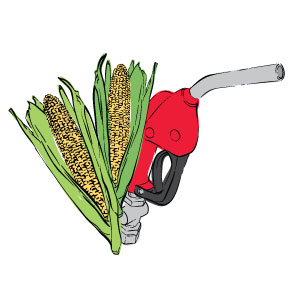American Motorcyclist February 2018
EPA Releases 2018 Renewable Fuel Mandates For 2018
Higher Volumes Not In Best Interest Of Motorcyclists
The renewable fuels mandates announced in November by the U.S. Environmental Protection Agency are higher than the 2017 levels and the 2018 levels the agency proposed in June.
 The EPA’s final 2018 Renewable Volume Obligations call for 19.29 billion gallons of renewable fuel—primarily corn ethanol—to be blended into the nation’s gasoline supplies. That figure is higher than the 19.24 billion gallons the agency proposed in June and slightly higher than the 19.28 billion gallons required in 2017.
The EPA’s final 2018 Renewable Volume Obligations call for 19.29 billion gallons of renewable fuel—primarily corn ethanol—to be blended into the nation’s gasoline supplies. That figure is higher than the 19.24 billion gallons the agency proposed in June and slightly higher than the 19.28 billion gallons required in 2017.
“This decision goes against the agency’s promise to listen to consumers, who have indicated a low demand for higher ethanol blends,” said Wayne Allard, AMA vice president for government relations. “Forcing more ethanol into the nation’s fuel supply places motorcyclists at greater risk of misfueling their bikes.”
The EPA mandates continue to rise, even as cars become more fuel efficient and drivers travel fewer miles each year. Forcing more ethanol into fewer gallons of gasoline results in higher-ethanol blends for consumers.
Most gasoline sold in the United States contains 10 percent ethanol (E10). However, if the RFS requirements continue to be implemented, it will result in higher-ethanol blends—such as E15 (15 percent ethanol)—becoming more prevalent at retail outlets. An increase in the supply of E15 can lead to inadvertent misfueling—caused by blender pumps and confusing pump labels—by motorcyclists.
None of the estimated 22 million motorcycles and all-terrain vehicles in use in the United States is approved by the EPA to operate on ethanol blends higher than 10 percent. Using higher-ethanol blends in those vehicles is illegal and may cause engine and fuel system damage.
The AMA also is concerned the increased reliance on ethanol will further reduce the amount of E0 fuel available. Since the distribution network for E15 and E85 is limited, fuel producers will be forced to reduce E0 output to stay within the EPA’s rule.
